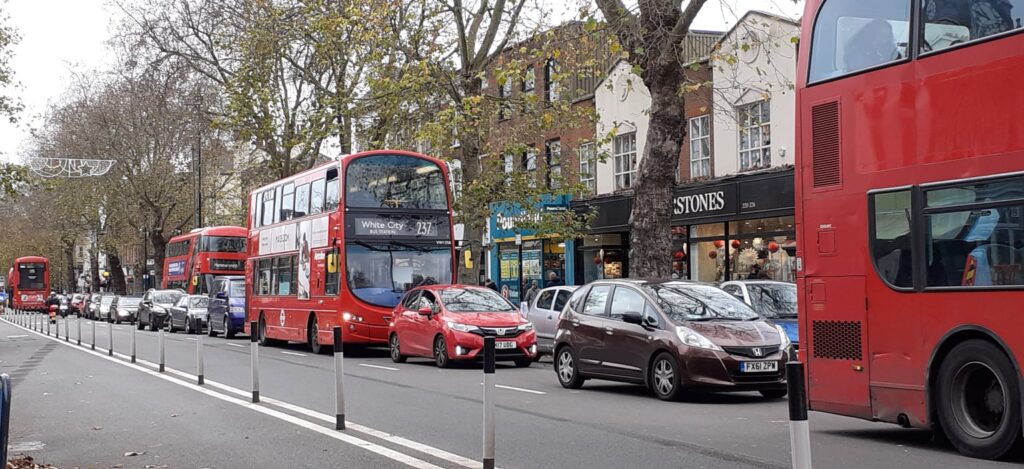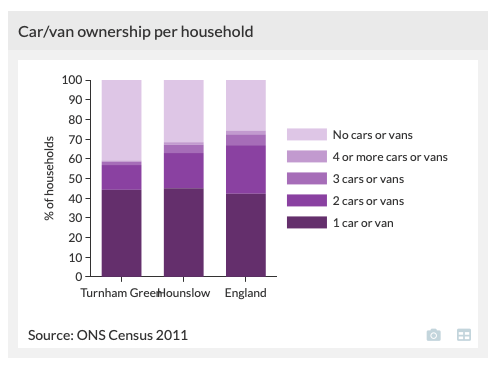Air Quality & Climate Change
Will LTNs and Cycle Lanes improve air quality, stop climate change or save the planet?
Hounslow Council are saying that they will.
But the facts don’t.
One of the overriding arguments for the sweeping changes that Hounslow Council and TfL say they want to bring about is to stop us taking to our cars, get us cycling and walking, and by doing so stop climate change and save the planet.
However inconvenient for people personally, and however much the elderly and the disabled might suffer, Hounslow and TfL claim this is ultimately for the greater good:
- So that we can enjoy better air quality and better health for young and old.
- So that we can reduce dependence on cars for the sake of the overall climate emergency

But the C9T Cycle lane will create no net benefit to air quality and it will probably make it much worse through displacement.
In July 2020 Steve Curran, the Leader of Hounslow Council, told us that Chiswick High Road had very poor air quality and was one of the most polluted roads in the country.
Chiswick High Road is in fact average for London, and far from being one of the worst areas and no worse than other parts of the Borough. Air quality has already been improving year on year.
The Council’s own annual Air Quality Annual Status Report (PDF) shows that the levels of nitrous oxide on the High Road have been falling year on year. Lower emissions from cars and buses will contribute to this.
2019 Air quality was 41.7 m-3 against objective of 40.0 m-3 (council objective)
That was before the pandemic.
This is likely to have improved in 2020
Will the Chiswick High Road Cycle Lane lower emissions?
TfL’s own consultants, AECOM who had been commissioned to study the impacts of the Cycle Superhighway 9 wrote a study in 2018 called ‘Air Quality and Noise Modelling’. Their conclusion was that the impacts were:
Majority of impacts “negligible” and overall “not significant”
Here is the whole paragraph:
The results of the air quality assessment suggest that the overall impact of the scheme is considered to have both beneficial and adverse effects in terms of air quality impacts but the majority of impacts are negligible.
Overall, as there are both improvements and deteriorations in NO2, and negligible changes in particulates, these effects are collectively considered to be balanced and overall not significant.
That report was for the original Cycle SuperHighway which was taking pavement space and wasn’t going to be taking out the bus lane.
But the current temporary Cycle route which knocks out a bus lane and is causing massive congestion is likely to make the pollution even worse. With stationary traffic and running engines with nowhere to divert, the air quality will degrade.
When Hounslow Council assured us that these changes would bring about better Air quality for Chiswick in July 2020, their claim was not backed by the evidence. And it is likely that the opposite is true.
What about the LTNs – will they improve Air Quality?
The concept behind LTNs is that they will stop “rat running”, get people out of their cars and force them to walk. But that won’t work. Some people are obliged to use their cars and vans – tradespeople, dogwalkers, the disabled, the elderly, and people having to move several people or heavy loads. Or they just have the kind of journeys that you just can’t reasonably cover on foot or bike.
Those journeys are now taking much longer and people are driving for longer periods. Cars have to crowd into the streets that do allow traffic, creating greater noise and pollution for the people who live in those streets.
So the congestion has just become more concentrated in other areas.
Better for some, much much worse, for others – but no overall improvement.
That is not justice and will not solve the bigger picture. And this is very divisive.
LTNS won’t improve air quality for anyone outside them, but they will damage quality of life.
Reducing Car Dependence
A 2009 study on car usage by Steer’s Davis Gleave revealed the following:
- Chiswick showed the highest incidence of car free lifestyle across the Borough; and,
- Chiswick showed a very high level of environmental awareness compared with nearly all of the rest of the Borough.
Environmental awareness and training are the main drivers of change when it comes to car usage – not bullying and fining people.
Why pick on Chiswick?
If the air quality and environmental awareness is better in Chiswick, then why target Chiswick? Car ownership in Chiswick’s Turnham Green is less than in Hounslow too.

Why not Brentford, Feltham or Heston where the need for better Air Quality is so much more important?
Why is Chiswick being targeted by LB Hounslow with the greatest expenditure on LTNs and cycle measures?
We can think of two reasons:
- Chiswick is a Conservative enclave, and won’t cost any the Labour Council any seats.
- The power of the cycling lobby in Chiswick who have worked very closely with the Hounslow leadership to get the changes THEY want.
But not on the basis of Air Quality and Climate Change.
We believe that coercion is and always has been counterproductive. It just doesn’t work. Tackling air quality can be better achieved by other means rather than setting up barriers and fines.

Alternatives to create cleaner air
- Having more charging points for electric cars – so cars will have lower emissions.
- Excellent public transport, where taking a bus or train is a natural first choice. Yet there is no step free access in any Chiswick station and bus services have been reduced and the bus lane removed.
- Well-run “Boris” bike schemes in the Borough might also help. But cycling will never be more than a small part of the answer – London cyclists only form between 5% and 10% of the population and the vast majority are white, relatively young and male.
- A better, safer environment for walking (that is being made much worse by the design of cycle lane which necessitates the removal of refuges on zebra crossings) .
- Really excellent signage which is sensitive to all road users, not just bikes.
- Fewer potholes in the roads and pavements making walking, cycling and scootering much safer.
- Upgrading the cycle paths that already run along the A4 from Kensington to Hounslow and creating ‘green walls’ which would benefit thousands.
But fining drivers drives people away. And shops and facilities have had to close because so many people in Chiswick, and visitors to Chiswick can no longer get to the High Street without sitting in traffic jams whether they come by bus or car, or they feel it is a no-go area because of the massive fines imposed.
People from South Chiswick are crossing Chiswick Bridge to do their shopping in Kew Retail Park or Westfield. And as more shops close, and the shopping choice diminishes, even more will drive longer distances to other areas to shop.
Chiswick is by its nature a crossroads. People have travelled through it north to south and back, east to west and back for a thousand years. They will continue to do so. You can only fight geography so much!
If the current plans remain in place, the most likely result will mean more pollution and congestion on surrounding roads as people battle through anyway because they must.
The other danger is that as the variety of businesses close down, the traffic goes elsewhere, and visitors abandon Chiswick as it lose its character.
But what is unlikely is that the traffic will “evaporate”.
It will make life for businesses, residents and visitors so much worse.
And the air less clean.
